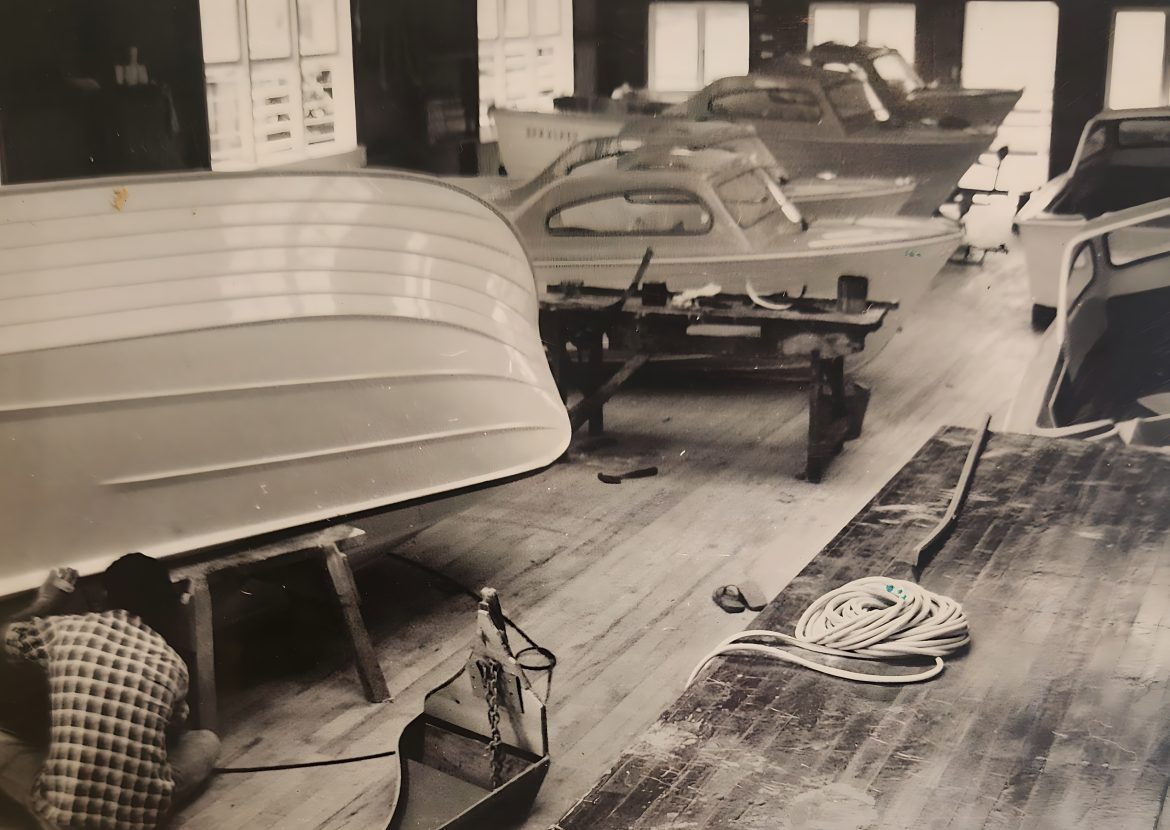1.3K
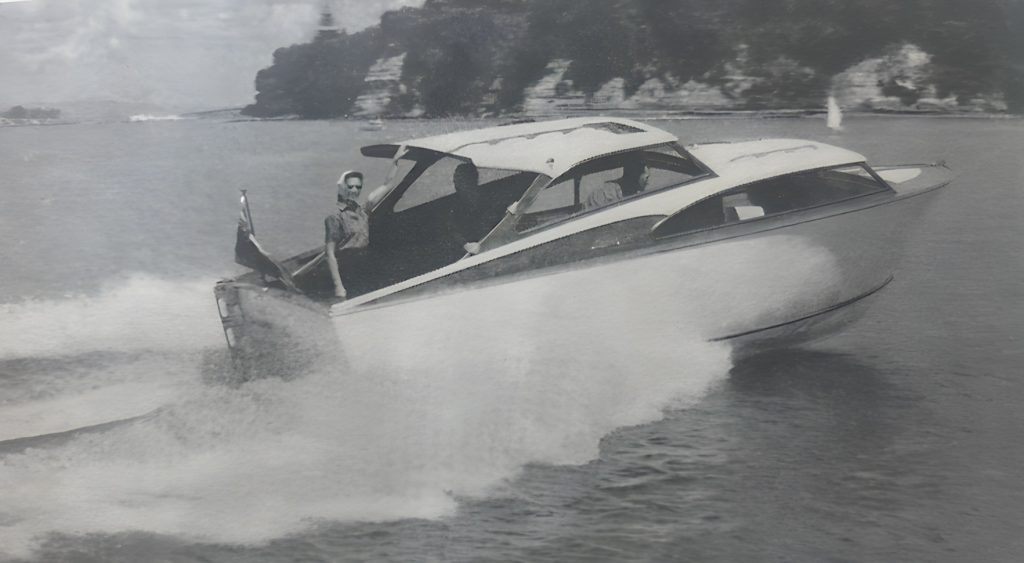
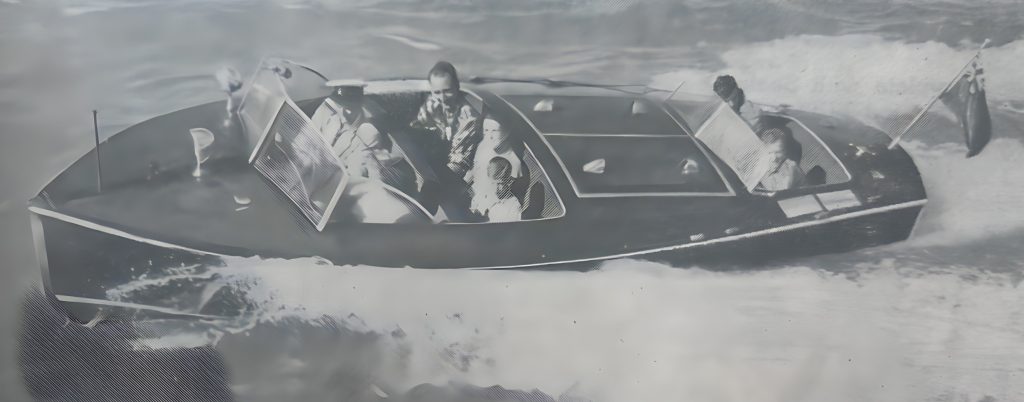

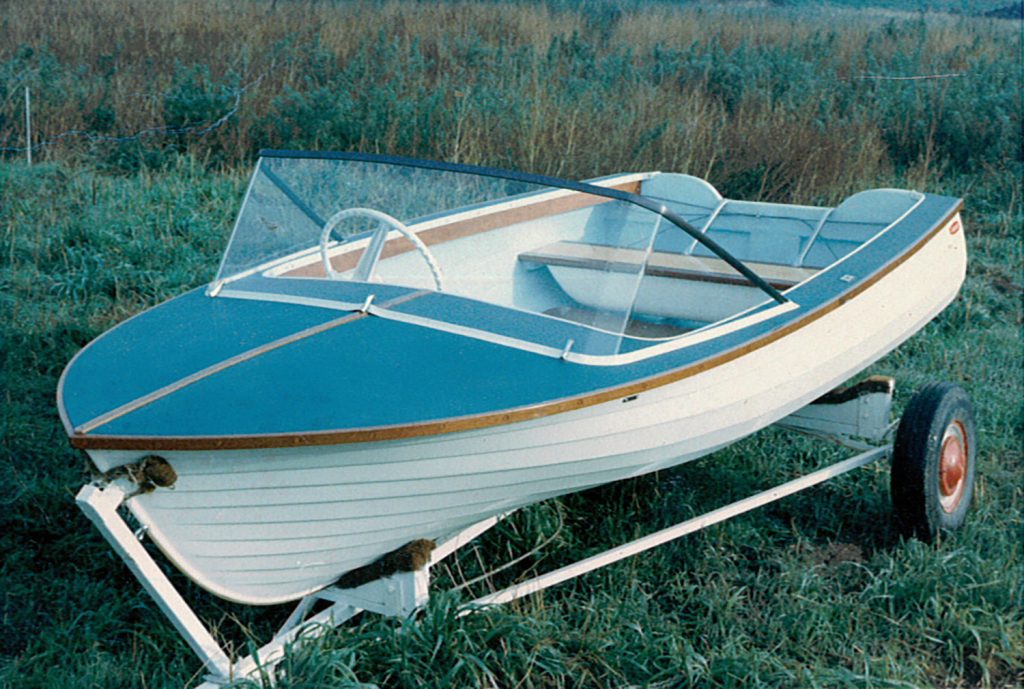


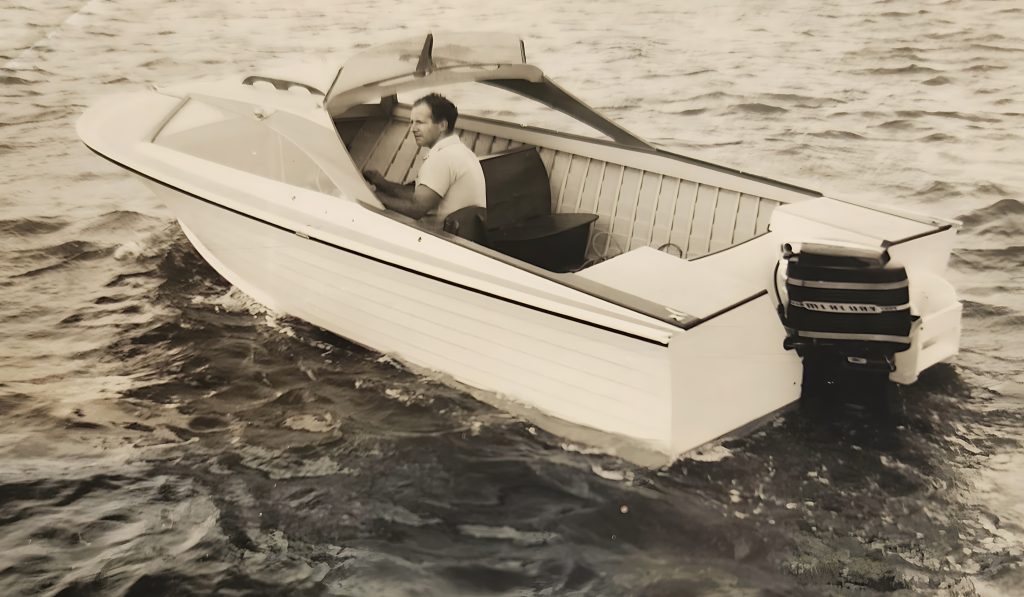
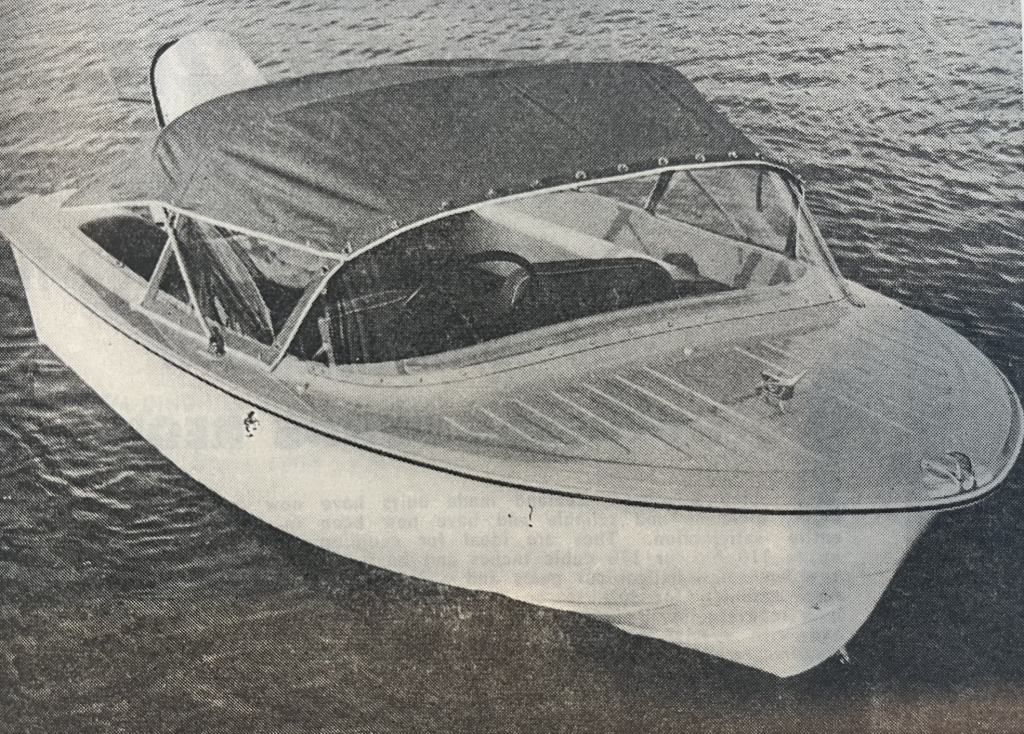
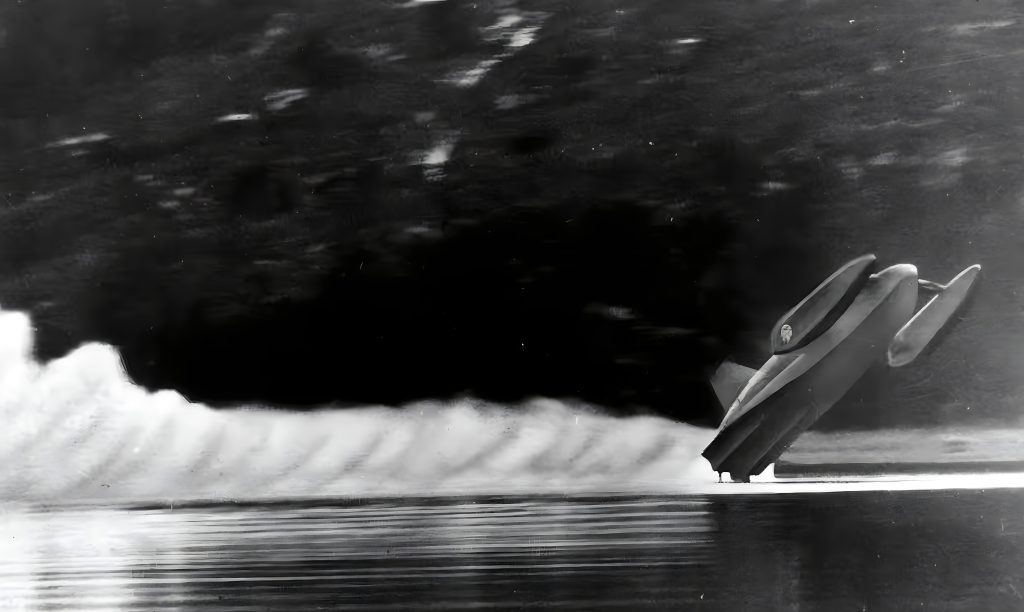
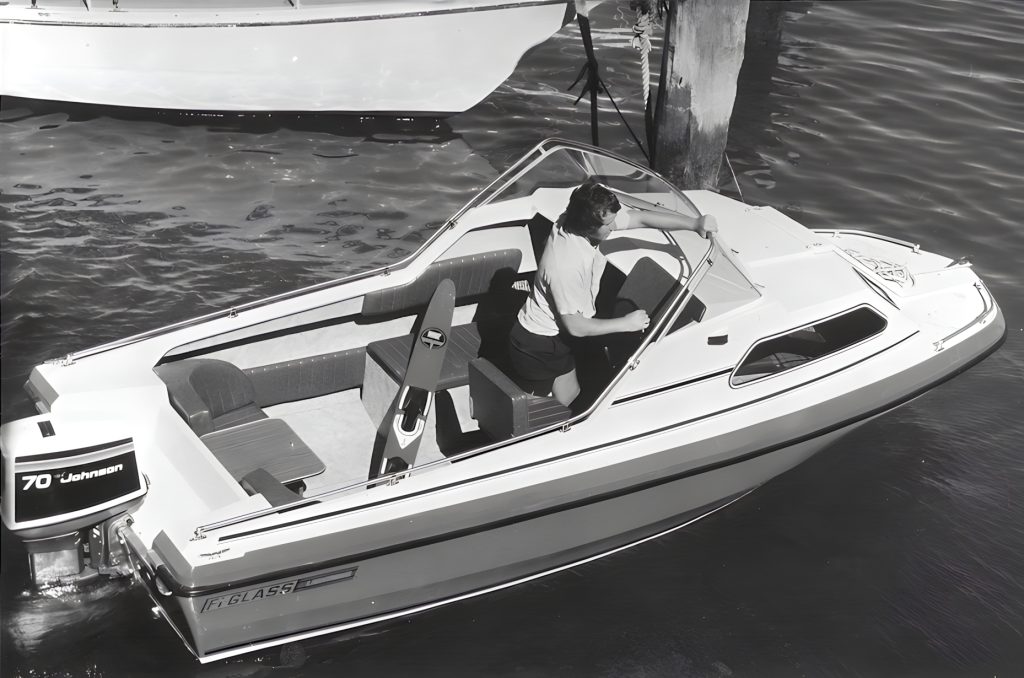
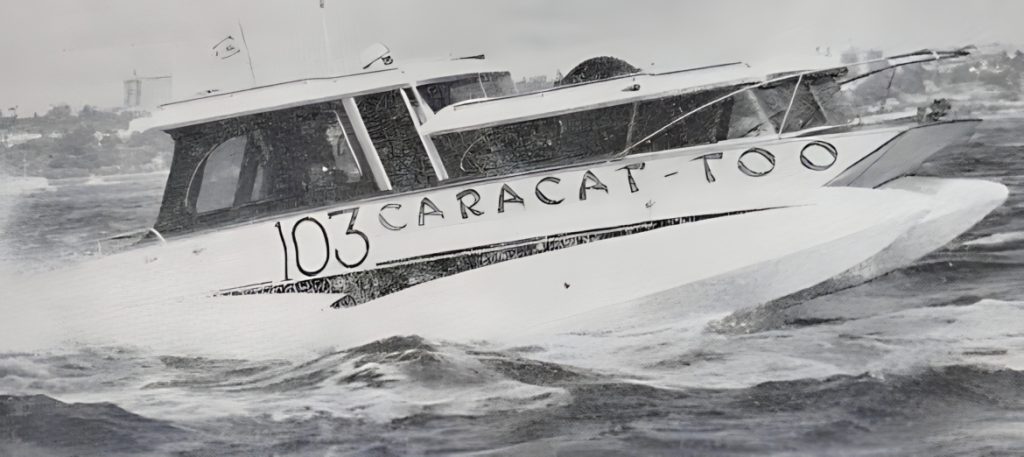
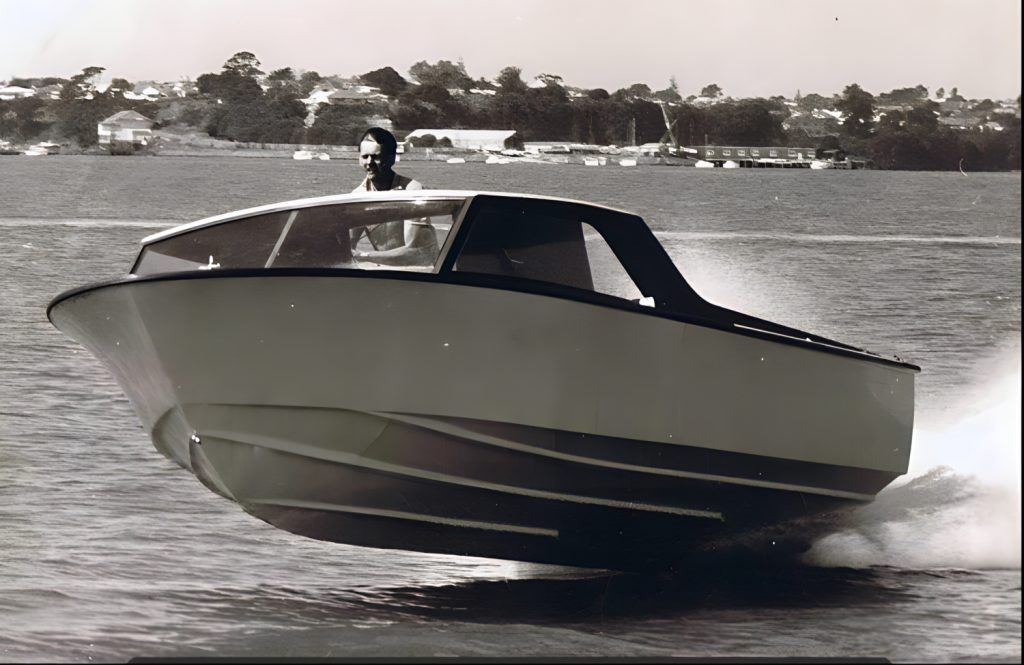
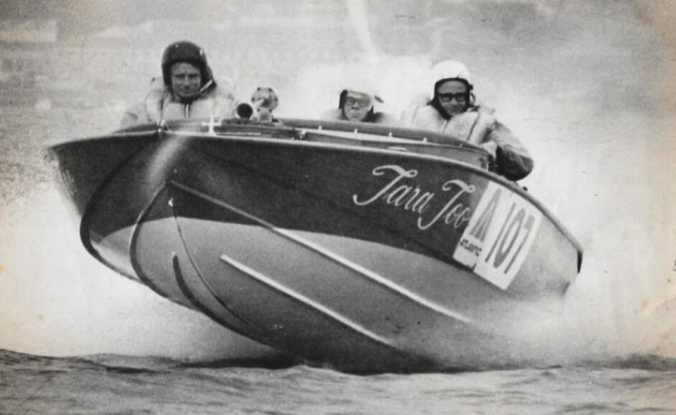

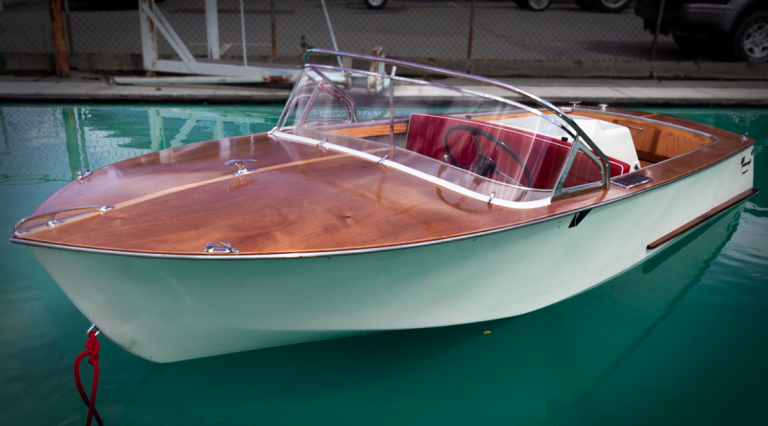
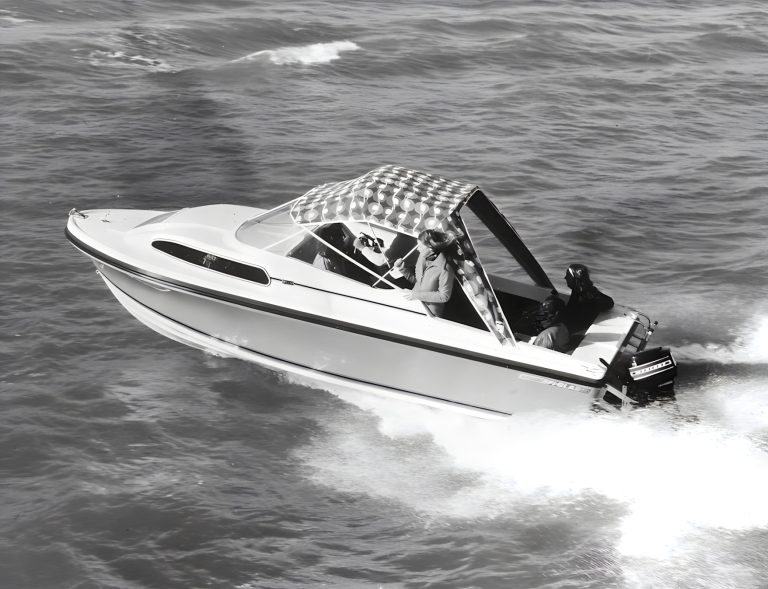
1960
- The first strip-planked cedar/fibreglass Clipper 23, Geo, came out of the new Mason Marine factory in Wairau Road, Takapuna. Geo was a standard small-window Clipper 23ft powered by the Graymarine Fireball V8 rated at 188hp running through a Warner Velvet Drive Hydraulic gearbox. In its day, the Clipper 23 was a work of art and considered one of the finest built boats in the country. The Mason Marine reputation was born and reinforced when Tony Mason won the NZ Industrial Design Award for |his boat designs.
- Boaties had the choice of sterndrives from Volvo Penta, Eaton Powernaut, Atlas Aquapower, Francecraft, Graymarine, Flexidrive, Hydrodrive, Kiekhaefer MerCruiser, OMC and Melhop. Of those, the only ones left today are MerCruiser and Volvo Penta.
- The biggest selling boat in New Zealand was the 16ft Plylite Sportmaster convertible.
- Elray, driven by Jock Appleton, retained the Griffith Cup for New Zealand despite a strong Australian challenge.
- Marine Plastics released the 12ft 6in Sea Nymph in GRP, the boat that started this long enduring brand. Bill Hamill Ltd of Rotorua was one of the first dealers. Retail price was 225 pounds.
- A Fleetcraft Voyager 18’ 9” cabin boat in plywood cost 485 pounds complete, ready for machinery.
- The De Havilland Company started building aluminium boats, the first being the Speed Topper. Production was 15 boats a week and they cost 135 pounds. Later models included the 14ft Tempest and Tradewind.


1961
- Australian Ernie Nunn won the Griffith Cup and took speedboating’s most prestigious trophy back to Australia.
- You needed 385 pounds in overseas funds to purchase a Mercury 100 hp outboard.
- The popular Marlin Ocean probe depth sounder sold for 45 pounds.
- Homelite built the world’s first 55hp 4 stroke outboard. The net weight of the engine was 227 lbs and it was based on a 4-cylinder, overhead cam, 59.4 cu. in. block. Few made their way to New Zealand.
- Bryan Jackson, an Auckland caravan manufacturer, launched Caracat I, a combination boat and caravan concept. Powered by two 40hp Johnson outboards it ran 26 mph and was later followed by an improved model, Caracat II.
- Bermuda, Bundy, Homelite, Scott, McCulloch, Rootes, Clinton, and West Bend outboards were still available.

1962
- The Chevrolet 283 cu. in. (4.6-litre) V8 was a popular power option amongst the ski boat fraternity.
- The Fi Glass brand started to make an impact in the production fibreglass market, albeit slowly at first, with an 11ft 6in (3.5 m) fisherman. This was soon followed by a 16ft 6in (5.0m) open runabout and a hard chine cabin cruiser.
- Ninety six boats ranging in size from 12ft (3.66m) to 40ft (12.2m) entered New Zealand’s first offshore powerboat races, the Atlantic 100 and Epiglass 40. Bill Caughey’s Aquilla won the speed section of the 100-miler and Dave Lichtenstein’s Ski Kat took out the 40-mile event.
- Howard Smith’s 18ft cathedral hull runabout paved the way for even larger models.
- The 1962 New Zealand Boat show recorded an attendance of 63,000 and boasted a 300ft x 40ft x 4ft 6in deep pool in the main arena.

1963
- Jock Appleton’s Elray I and Elray II scored a double victory in the Masport Cup.
- Plylite opened a huge 11000 sq ft showroom at Paraparaumu. The building is currently the home of Paraparamu Boating Centre.
- Trim tabs gained popularity on trailer boats, with both manual and electro-hydraulic models fitted.
- Mason Marine released the Clipper 19, which was styled and constructed along similar lines to the popular Clipper 23.
- Atlantic 100 overall winner was Alf Pinker in his 21ft (6.4m) cabin cruiser Debonair, with Ron Brunton taking overall honours in the Epiglass 40. The event attracted 82 entrants and as yet no specialist race boats had been built for the event.
- Maurie Dunn was killed at Bottle Top Bay when his hydroplane Elray II was demolished during a speed run at 130 mph.
- A Johnson 90hp electromatic retailed for 685 pounds and a Johnson 40hp Big Twin for 360 pounds.
- Some of the more popular boats of the year were: Fleetcraft Voyager, Marlborough 20, Hartley Gadabout, Pelin Aquarius, Marlin 19, Plylite 18, Marksply 20, Fi Glass Regent and Clipper 23.


1964
- Miss Horotiu won the Masport Cup held on the Tamaki Estuary in Auckland. This was the second time for driver George Sullivan.
- Hewitt Boats (NZ) Ltd and Bertram Boats announced they had made arrangements to manufacture the world famous Bertram Boats in New Zealand. The first model was a Ray Hunt designed V19, later re-badged the Vistacraft V19.
- Reid Trailers enter the market and provide a stock supply to cater for popular Hartley and Plylite deep vee models.
- Sea Nymph V13 and V17’s released by Marine Plastics.
- Glen & Peter Urquhart had Frank McLeod build a new 18ft (5.5m) hard chine flatbottom, which they named Miss Coventry. Powered by a 427 SOHC Ford, this boat went on to be one of the most successful in its class.
- In 1964 the Seacraft brand was building 70 to 80 kauri boats per year, these were predominantly powered by Mercury outboards and sterndrives.
- Richard Hartley’s Guide to Boatbuilding book had sold 82,000 copies since first released and Hartley had sold over 50,000 sets of plans, worldwide.
- Peter Morgan, then a student at the University of Auckland School of Engineering at Ardmore, was the first in the country to run laboratory tests on composite sandwich panels suitable for boat construction. He began construction of Aurora, a 20ft (6.1m) powerboat of his own design, NZ’s first composite sandwich boat.


1965
- Yamaha outboards made their first appearance in New Zealand, distributed by Outboard & Boating Ltd of Auckland. Models ranged from 4hp to 8hp.
- Donald Campbell was killed at Coniston Waters whilst attempting the world water speed record. He crashed at over 350 mph.
- Cresta Craft from Christchurch gained nationwide interest with V160 and V140 models.
- Sea Craft produced their first GRP production boat – the 15ft (4.6m) Costa Mesa. This was soon to be followed by a 19ft (5.8m) cabin cruiser.
- Trailer Craft Marine produced a range of deep-V boats in plywood and enjoyed excellent success in local offshore racing.
- Wellington’s first offshore race struck rough seas and was won by Bill Stevenson in Clipper II.
- Peter Knight’s Bel Air III won the 150 cu. in. title at the United States national sweepstake regatta. John and Keith McGregor finished fourth at a meeting in Valleyfield, Canada. They were both part of a New Zealand speedboat team to the USA.
- Tru Jen broke the NZ unlimited hydroplane speed record with a run of 126.74mph.
- Fi Glass released their all-new Lightning runabout and it became one of the country’s best-loved ski boats.
- Aucklander Roly Crowther developed the world’s first Wankel outboard, using the Wankel KM37 powerhead. It developed 9hp and apart from the powerhead everything was made in New Zealand.


1966
- When Peter Morgan showed Tony Mason the completed hull of Aurora, Peter’s revolutionary composite sandwich 20ft (6.1m) offshore powerboat, Tony quickly arranged to make a mould off it, and thus was born the Clipper DV20, the only Clipper model ever to have hard chines! The 25-degree deadrise gave the Clipper DV20 an incredibly soft ride and with a MerCruiser 225hp (Chev 327 V8) sterndrive they had a top speed of around 45 mph. On Aurora’s launching day, Jack and son Peter Morgan’s old friends Tony Mason and Richard Hartley were so impressed with Aurora’s soft ride that Tony immediately designed the deep-V Clipper 24 (7.32m) and Richard Hartley, immediately designed his Hartley deep-V 20 (6.1m) for amateur construction in plywood.
- Bryan Jackson’s Caracat II took a surprising first overall in the Atlantic 100. This was the only Atlantic 100 ever to be raced in mirror calm conditions, giving the traditional flatter-bottom boats a distinct speed advantage.
- Mason Marine’s solid fibreglass-hulled Clipper 24 (7.32m), its deadrise of 25 degrees doubtless inspired by Tony Mason’s memories of riding in Aurora on its launching day, succeeded the well-proven strip cedar-hulled Clipper 23 (7.01m).
- Boats such as Spencer Black’s Plylite Turtle and John Meredith’s Tiger Hunter heralded the arrival of the new breed of ‘offshore boats’ that would dominate the sport over the next 10 years.
- The New Zealand speed record was upped to 130.244 mph by Keith McGregor in his hydroplane, Air New Zealand.
- Peter Knight broke the world 150 cu in hydroplane record, with a speed of 114.131 mph, in his Ford V6 powered Bel Air III.
- Samuel Parker Ltd released a range of aluminium boats, designed by John Spencer, under the Parkercraft brand name. First models were 8ft (2.44m), 10ft (3.05m), 12ft (3.66m) and 14ft (4.27m). The driving force behind Parkercraft was Samuel Parker Ltd’s sales manager Roger Arkel, who later founded marine retailer Roger’s Boat Shop.
- The long-awaited Sea Nymph V16 (4.88m) gullwing was launched and it became one of the best-selling boats of its size for many years.
- The first six-hour powerboat marathon was held in Auckland, with overall honours going to Trevor Burnnand’s Kitten, a Rex Henry designed, 17ft (5.1m) racer powered by a 275hp Chev Corvette.
- 62,357 people attended the New Zealand Boat Show and fibreglass boats were in more abundance than ever.
- Haines Hunter boats from Australia were introduced into New Zealand, with the V163 (4.95m), V17 (5.1m), and V19 (5.8m) and models built in Masterton.
- A Vistacraft V19 (5.8m) completed a 700-mile journey from Wellington to Auckland to prove the durability of fibreglass construction.
- Plylite Johnson GT was the first offshore tunnel hull to be raced, although with limited success.
- Johnson/Evinrude added 26 new models to their outboard range, including the V4, 115hp.
- Condor Craft released their 13ft (3.96m) Skipjack for $698, a boat that would later prove to be one of their best sellers.
- Sutton Mason developed a new Marlin Marauder Mk2 which featured a 14-degree deadrise and cold moulded kauri construction.
- Mystic Miss, the triple Mercury outboard powered Plylite 26 (7.92m) and Ivan Boyce’s Chev V8 powered 5.8m Tara Too entered the offshore scene and heralded a whole new era in offshore powerboat racing.
- Fi Glass were undisputed market leaders, producing more fibreglass runabouts than anyone else in the country.
- Panic Mouse, driven by the Caughey brothers, smashed the Atlantic 100 record with a time of 1hr 54 min.
- Sea Craft’s Costa Mesa retailed for $960, ex windscreen and trailer. PIC 4
- Plylite built a boat with a plywood hull and fibreglass deck they called the Combinaire. However, soon after, they announced their entry into the fibreglass boat market proper, building Bertram, Caribbean and Pride boats under licence to International Marine, of Australia.
- Fibreglass Moulders released the first 14ft (4.27m) Fleetline Sapphire, a Rex Henry design, that became one of New Zealand’s biggest selling boats of its size.


1967
- Ivan Boyce won the Atlantic 100 in Tara Too, his first major win since launching the boat the previous year.
- The Glasscraft 16 cabin runabout gained prominence on the offshore circuit and proved a good seller in the early ‘70s.
- The total attendance figure for the NZ Boat Show, at 55,253, was well down on the previous year. Of special interest was a Wankel rotary inboard/outboard fitted to a Vistacraft.
- Import restrictions on outboards were abolished, thanks in part to hard work by the Boating Industry Association.
- The Seacraft Costa Mesa was the first GRP boat from the Seacraft factory, followed by a 13′ Boston Whaler style boat, some 350 of this model were produced from about 1967.
- Fleetline came out with a Mk3 model of the Sapphire, with the hull extended to 14ft 6in (4.42m) and Condor Craft launched the Dolphin V160 (4.88m).
- These were boom times for powerboat racing, with 103 boats entered for the Auckland races. 96 boats lined up for the Wellington event and 84 crossed the starting line at Taupo.
- Leaf springs on trailers were still the most popular suspension, but the new Duratorque units were gaining favour.
- Condor Craft developed the first production fibreglass bowrider in the country – the 14’6” (4.42m) Manta.
- Bill Goss circumnavigated the North Island in a 13’7” (4.14m) Plylite powered by a Johnson 40 and took 13 days to complete the journey.
- Cooke Brothers designed and built the first circuit racing tunnel hull in the country and flipped it while testing in Christchurch. It was to be the first of many accidents for the Cooke brothers. They also competed in a few offshore races in the North Island.
- Plylite’s radical new Pride Panther sports ski boat was a big hit and their deep-V Bertram Bahia Mar attracted huge interest.
- The first Clipper 26SR racer was built for Robin Weston-Webb and powered by triple Johnson 125 outboards. Destroying lower units caused huge reliability problems.
- Chris Marks’ (no relation to Dave Marks) Lancer inflatable boats made their first appearance on the local market, with four models from 10ft (3.05m) to 13ft (3.96m).
- Two Mason Marine Clippers, Black Tulip and Jet Clipper, broke the record for a run from Auckland to Russell, averaging 38.2 mph. This record stood for many years until broken by Graeme Horne.


1968
- Leading fibreglass boat brands were Fleetline, Glasskraft, Fi Glass, Plylite, Condor Craft, Marksply, Haines Hunter, Marlborough, Clipper, Sea Nymph, Sea Craft, Hamilton Jet, Glass Marlin, Vistacraft and Cresta Craft.
- Yamaha chose New Zealand as a testing ground for their new Yamaha P-165/8hp and P-450/25hp outboards. A spokesman for the company said that “Yamaha may move up to 50hp but we have no plans to go any bigger.” ….yeah right!
- Fyran released the 15ft (4.6m) Futura, the first production open aluminium runabout in the country. Until then aluminium boats were no more than large dinghies.
- The McGregor brothers’ hydroplane Air New Zealand showed great form in Australia, taking out a number of races. Previously, they had broken the Australasian speed record at 157mph at Lake Karapiro in New Zealand.
- Mini Boat racing arrived in Whangarei and spread throughout New Zealand.
- Fi-Glass was producing 12 boats a week and Glasskraft 5, and all major builders were snowed under with orders.
- Outboard motor imports were running at around 500 per month, with popular sizes between 45hp and 60hp.
- Rex Henry estimated that 75% of the trailerboat market was in the 14ft (4.3m) – 15ft (4.6m) size range.
- Spinner Black’s Jim McKay designed Old Crow started to show why this 27ft (8.23m) monohull design would come to dominate the sport over the next few years by taking out such races as the Wellington BP100.

1969
- Keith Sinclair broke the unlimited outboard hydro record with a speed of 95.19 mph in Bel-X-III. It also featured New Zealand’s first fully enclosed canopy on a race boat.
- Christchurch-based Glasskraft announced two new cabin cruisers, the Ambassador 18 and Statesman 22. Both sold exceptionally well throughout the country.
- Fi Glass released the Viscount, a 20-degree V, 19ft cabin cruiser which sold well.
- With the 7.5hp model, Honda announced its arrival in New Zealand. All Honda outboards were, and still are, 4-strokes.
- Don Killner took a V22 Cresta Capricorn on a 700-mile delivery journey to its new owner, up the Mississippi River. In the same year he completed a 2000-mile circumnavigation of New Zealand.
- Neville Sutherland , John Butterfield and Chris Thacker won the Rio Balsas International jetboat marathon in Mexico in a Hamilton J52.
- Keeping the 5 million gallons (22.7 million litres) of water in the pool at the NZ Boat Show was a major problem and 2 million gallons leaked out overnight. The show was poorly supported by the trade but the organisers claimed a staggering 91,000 through the gate.
- The first-ever NZ 4-Hour Enduro was held at Lake Karapiro and won by Australian Bert Hines in a Frank McLeod built tunnel hull powered by an Evinrude Super Strangler. The event attracted 45 entrants and was the biggest gathering of tunnel hulls ever in NZ up ‘til that time.



